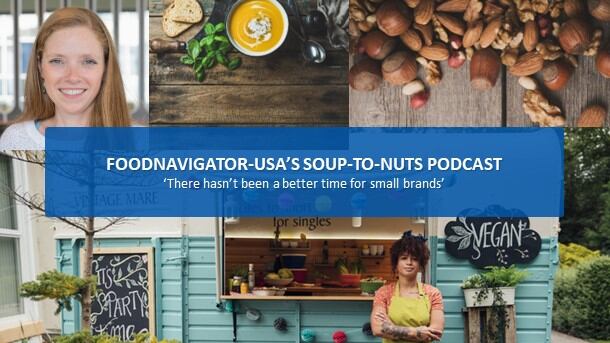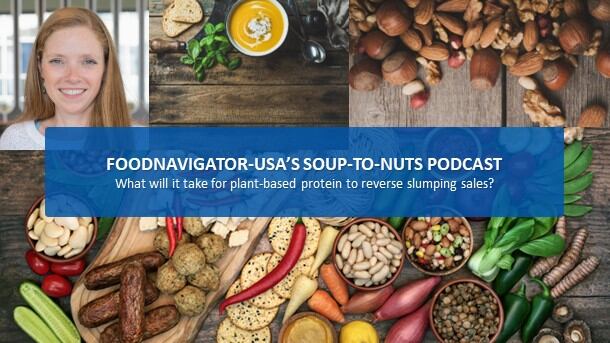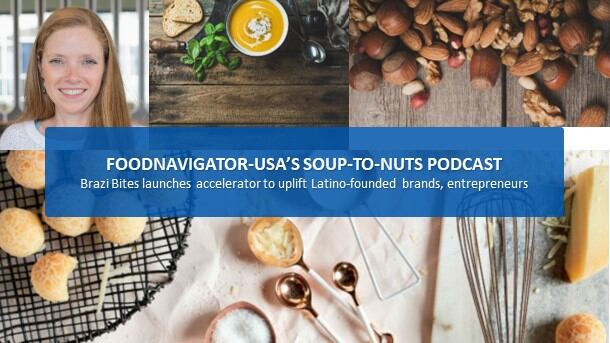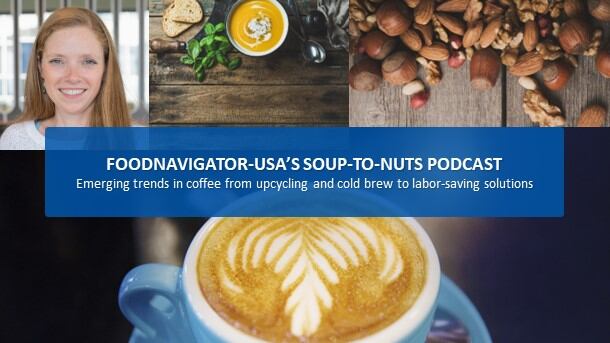According to NielsenIQ’s recently published 2022 Brand Balancing Act Survey, about half of global consumers said they are buying a greater variety of brands than they were before COVID-19, but the brands they ultimately support and the products they put in their carts still need to meet some basic criteria – including delivering on function, offering an emotional connection, resonating with their personal or cultural identity and being within their financial reach.
Unfortunately for many small and mid-size brands with limited analytics budgets, pinpointing and delivering on those criteria can be a high-risk challenge. Which is why NielsenIQ has developed a new framework to help companies of all sizes evaluate opportunities and understand the hallmarks of successful innovation so that they can scale and grow.
In this episode of FoodNavigator-USA’s Soup-To-Nuts podcast, Andrew Criezis, senior vice president and general manager of NeilsenIQ SMB, shares insights into the four pillars of this framework, which included preference, performance, innovation trend-cycles and meaningful differentiation. He also shares examples of how CPG companies have successfully executed innovations and lessons learned.
[Editor’s note: Never miss an episode of FoodNavigator-USA’s Soup-To-Nuts podcast – subscribe today.]
‘The most dynamic landscape we’ve seen in decades’
The last three years have brought unprecedented change with emerging global concerns, transforming consumer habits influenced by inflation and tech adoption, and dramatic shifts in operating costs – all of which are impacting businesses go-to-market strategies and approach to consumer engagement.
And while change can be challenging, Criezis notes it also brings opportunities – especially for small and midsize brands that have traditionally struggled to break into the market, but which are more flexible than their larger, more established counterparts.
“There is not just one disruption. The shift from in-store to online, massive disruptions when it comes to supply chain, labor shortages, inflation … consumers driving higher expectations with sustainability – all of that mean, as a brand, it is probably the most dynamic landscape we’ve see in decades,” Criezis said.
How brands respond depends partly on their size with smaller, more centralized businesses with shorter supply chains and local companies able to adapt more quickly than the larger companies that rely on international markets and longer supply chains, he explained.
In addition, small and midsized local businesses are more likely to keep their costs down as they often don’t have to transport product as far, which translates to savings they can pass on to consumers who are feeling pinched by inflation, he added.
And while larger companies can offer savings through bulk offerings, smaller ones are more likely to have lower opening price points and smaller packages that lower the risk of trial for consumers who may be unfamiliar with their offerings.
Online shopping levels the playing field for small and large companies
The need for enhanced safety and social distancing during the pandemic also accelerated the adoption of online and omnichannel shopping, which Criezis describes as one of the largest transformations the industry has seen in recent years and a major growth driver for small and emerging brands.
He explained that small brands can compete more directly with large brands online because the shelf space is “totally different.” Unlike in-store where large brands can dominate with significantly more facings, online small and large brands appear side by side as consumers search for generic terms, like ‘cookies’ rather than by brand names, like Chips Ahoy!.
“That shift in buying behavior has enabled small brands to have a better visibility to consumers, and it has allowed consumers to also, as we’ve learned from this study, to get a wider variety of products,” he explained.
“What we’ve see is that SMBs or emerging brands have contributed to about 52% of the growth in CPG in Q! of this year even though [they] are 30% or a third of the overall sales in the US marketplace,” he added. “This means they are getting more and more space in purchases, and that is a great story for emerging brands at this time.”
A new framework to help small businesses scale
To help small and mid-size brands better seize these opportunities as well as identify other areas for growth, NielsenIQ undertook a global data investigation in how consumer needs have evolved in the past two years and how industry should respond to acknowledge these changes.
The outcome is a new framework made up of four bases around which Criezis says brands can run to scale their growth.
“The first base we refer to is called ‘preference,’ where we lean into essentially data and understand what consumers want” to see in the market and buy, he said.
The study reveals four in 10 consumers consider themselves ‘agnostic brand buyers’ who don’t have a preference and are open minded, and these are who small brands should target in their marketing efforts, he said.
Based on the survey results, Criezis says their purchases and preferences are heavily swayed by affordability and perception of value.
While the scales may currently be tilted in favor of small and mid-sized brands, Criezis noted that large companies are learning fast from their smaller counterparts and either innovating or forging partnerships accordingly through incubators, joint ventures and minority investments.
Benchmarking performance reveals where small brands are winning
But there are a few areas where Criezis says small brands continue to hold the upper hand, as revealed in the second base of the paradigm, which is benchmarking performance.
“Small brands are definitely challenged when it comes to competing with large brands, without a doubt. But there are two areas that they’re making considerable inroads, and that is in fresh produce and fresh meats,” he said, noting a quarter of shoppers from NielsenIQ’s study prefer buying small when it comes to fresh produce.
“Another top area where consumers are looking for emerging brands is in confectionery and snacks,” where the survey showed about 44% of consumers don’t have a brand preference, he said.
Criezis hypothesizes that smaller brands perform well in these spaces in part because consumers are more openminded about or actively looking for local brands, which they perceive as ale to deliver fresher products. And because the portion and opening price points tend to be lower, such as individual candy bars or packages of cookies, and therefore the bar for initial trial is lower. With this in mind he recommends brands in these categories lean into these strategies as they think through their packaging and messaging.
Combing innovation trend-cycles for opportunities
To gain ground in other categories, Criezis advises small to midsize brands prove their worth – and relevance – to shoppers by offering products that are relevant but also new. To help brands balance product development with other pressing priorities, like price point, the third pillar of the paradigm focuses on innovation trend-cycle analysis.
“About four in 10 shoppers are seeking innovation and wanting to try new things. So brands don’t just have to deliver the same thing at a low price,” they can offer something new and tap into a larger group of consumers, he said.
Cutting edge areas for innovation where Criezis says he sees building consumer demand include sustainable packaging and, as you likely expected, plant-based. But in particular, plant-based products that are healthy.
Meaningful differentiation helps brands pull ahead
Given the popularity – and heightened competition around plant-based and other emerging areas – a key to success is offering meaningful differentiation, the fourth pillar in NielsenIQ’s platform for evaluating opportunities.
As Criezis explains, differentiation isn’t just about a different color packaging or flavor, it is about educating consumers on essential differences and tapping into different lifestyles or values by offering products that meet specific pain points and needs.
“Is there a different lifestyle that you’re helping accommodate? And are you owning that lifestyle? So, again, whether that’s sustainability or ketogenic-friendly or something that is helping someone with an allergy – those key innovations, trends, then lead to or should be incorporated into a lifestyle brand. And that leads to this pillar of differentiation and leads you down a path of innovation,” he said.
As helpful as this paradigm for evaluating opportunities is, it also highlights how daunting breaking into a market can be for small and mid-size companies. But even though there is some heavy lifting Criezis says now is a great time for small and mid-size brands to carve out their niche and build a following.
“There hasn’t been a better time for emerging brands to help transform the CPG industry – to be real change agents withing the category or create entirely new categories in the marketplace,” he said, adding: “There’s more and more people who are looking for local emerging brands, and so if you embrace some of these key trends, embrace some of the key strategies around measuring performance, telling your story – you have a great opportunity to sell both online as well as retail and start to command more space in the store.”
Companies interested in learning more check out the full Brand Balancing Act report, which is available on NielsenIQ’s website, or Criezis recommends checking out NielsenIQ’s Byzzer.com platform, which focuses on democratizing data and analytics so that smaller companies with more limited resources can still build their story, understand the competitive landscape, measure their sales and ultimately win in retail, both online and offline.




